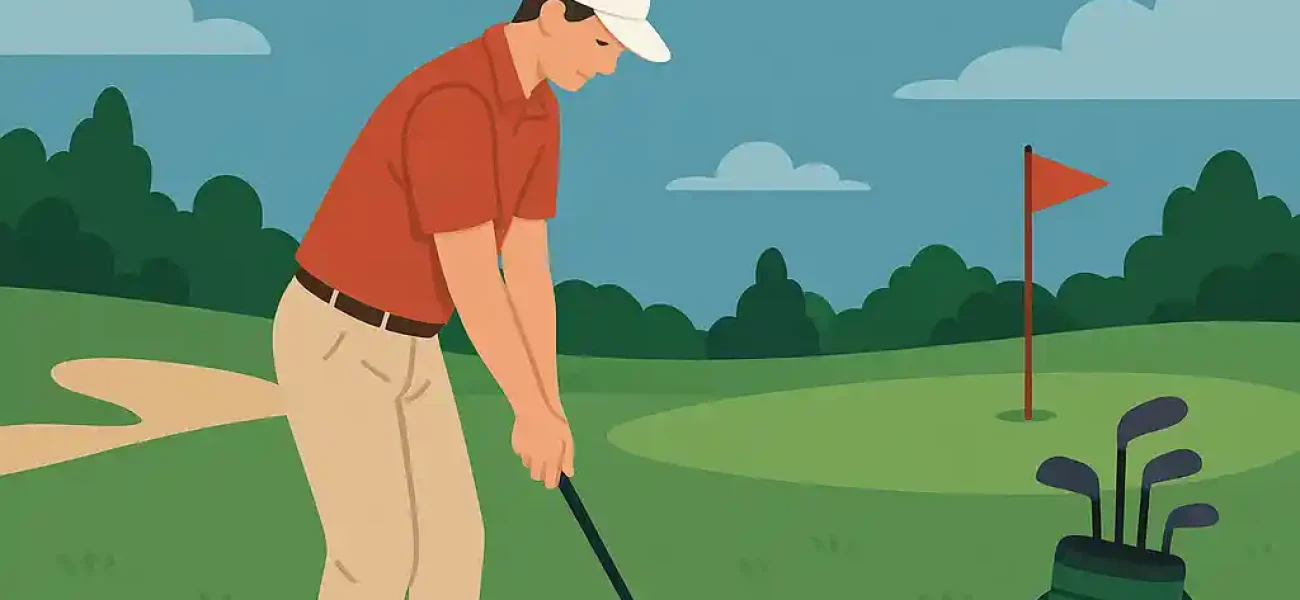If you’ve ever stepped onto the first tee and hesitated, wondering who’s supposed to go first, you’re not alone. Many golfers, especially casual players or beginners, get confused about the proper teeing order. While the answer used to be strictly governed by tradition and the idea of “honours,” today’s game has embraced a more flexible, pace-friendly approach known as “ready golf.” Understanding the difference between the two not only helps you follow the rules but also keeps the pace smooth and respectful for everyone on the course.
Let’s break it down so you’ll never find yourself awkwardly frozen at the tee box again.
What is “Honours” in Golf?
Traditionally, the player with the best score on the previous hole has the “honour” of teeing off first on the next hole. It’s a rule rooted in etiquette and order, and it’s common in competitive or formal play, such as club tournaments or match play formats. If two or more players tie a hole, the original order from the previous tee usually carries over.
On the first tee of the round, the order is usually decided randomly. This might mean flipping a tee, pulling numbers, or letting the course starter assign the order. After that, the player who scores lowest on a hole gains the right to hit first on the next one.
In match play, the honours rule is taken more seriously, as it can influence strategy and shot selection. Hitting first might allow a player to apply pressure or make a safe play, knowing their opponent must take a risk.
The Problem with Strict Tee Order
While the idea of honours is steeped in tradition and respect, sticking to it rigidly in every setting can slow down the pace of play. If the person with honours isn’t ready—perhaps they’re grabbing a club, checking the wind, or taking a drink—it means everyone else must wait, even if they’re ready to go.
In casual or recreational rounds, where enjoyment and pace are often more important than formalities, this delay can be frustrating. That’s why modern golf culture has increasingly adopted a more flexible system called ready golf.
What is “Ready Golf”?
Ready golf is a concept that prioritizes efficiency and pace of play over strict adherence to the honours system. The idea is simple: if you’re ready to hit and it’s safe to do so, go ahead—regardless of traditional tee order.
It doesn’t mean ignoring other players or rushing shots. It’s about using common sense and respecting each other’s readiness. If someone is fiddling with a yardage app or still deciding on a club, and you’re standing ready with driver in hand, it’s perfectly acceptable to step up and hit.
Ready golf isn’t just for the tee box. It applies throughout the round—on the fairway, around the green, and even on the putting surface. The goal is to keep the group moving and avoid unnecessary delays.
How to Practice Ready Golf Without Being Rude
Many golfers hesitate to adopt ready golf because they don’t want to appear pushy or disrespectful. But there’s a right way to do it that keeps things courteous.
First, communication is key. If you’re in a group of strangers or playing partners you don’t know well, mention at the beginning of the round that you’re happy to play ready golf. Most golfers will appreciate it and follow suit.
Second, always make sure it’s safe. Never hit if someone is still in your range of play, standing in front of you, or within earshot of your swing. Ready golf doesn’t override basic safety and courtesy.
Third, keep it light. If someone insists on going in order or prefers to wait, don’t argue—just stay flexible and focus on enjoying your round.
When to Stick With Honours
There are certain situations where traditional tee order still matters. In match play or formal competition, for example, following the order is part of the rules and etiquette. Breaking it may not result in a penalty (unless your opponent objects), but it can throw off the flow of the match or give an unfair advantage.
Also, in some social rounds with wagering involved or when there’s a specific order of play being tracked for fun, players might want to stick with honours. It’s a way of keeping the round organized and respecting each player’s performance on previous holes.
In these cases, make sure everyone is on the same page early in the round. A quick agreement about using honours or ready golf can prevent confusion or tension later.
Managing Tee Box Dynamics in a Group
Tee box etiquette isn’t just about who goes first; it’s also about how you behave while others are hitting. Regardless of order, always stand still, remain quiet, and stay out of the player’s line of sight. Don’t move or shuffle clubs during someone’s backswing, and avoid standing directly behind them.
When your turn is coming up, be mentally and physically prepared. Have your club chosen, your ball teed up, and your mind focused. This reduces downtime and keeps the pace consistent.
If you’re playing with newer golfers, be patient and offer friendly guidance. Let them know it’s okay to tee off out of order if they’re ready and everyone is comfortable. Ready golf is also a great way to reduce pressure on beginners who may be anxious about holding up the group.
The Role of Courses and Resorts
Many modern golf facilities now encourage ready golf openly. You’ll see signs near the first tee or reminders on scorecards asking players to keep up the pace. This is especially common at busy public courses or resort-style destinations that host a large number of guests.
For instance, at Manor & Ashbury Resorts, guests are encouraged to adopt ready golf principles as part of their casual, friendly golf atmosphere. With a wide mix of skill levels and group types, the resort promotes a respectful but relaxed playing culture that allows everyone to enjoy their round without unnecessary delays.
Courses want to avoid backups, frustrated players, and marshals having to intervene. By promoting ready golf, they help ensure a smooth experience for all players on the course.
To sum it all up, understanding who tees off first in golf is more than a rule—it’s a tradition that reflects the values of the game. But as golf continues to evolve, especially at the amateur and recreational level, flexibility is essential. Ready golf offers a smart, respectful alternative that keeps the round moving and the experience enjoyable for everyone involved.
Next time you step onto the tee box, think about the situation. Is it a competitive match? Then, honours might apply. Is it a weekend round with friends? Then, ready golf could be the perfect approach. Whatever you decide, keep communication open, stay safe, and remember: good etiquette always starts with being aware of others.
Golf isn’t just about how you swing; it’s about how you play alongside others. And sometimes, the most courteous thing you can do is simply be ready to hit when it’s your turn.




